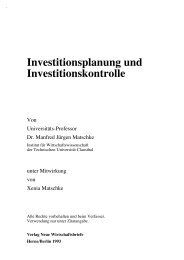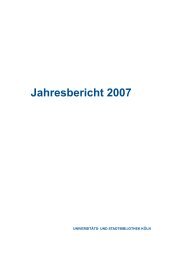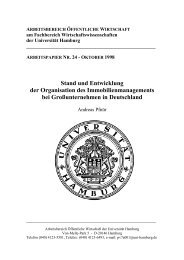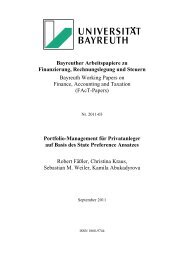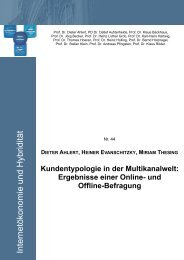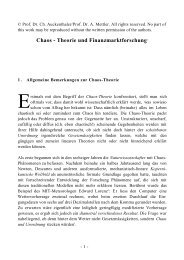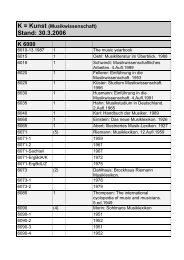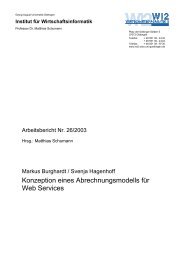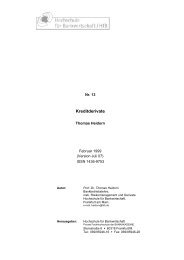FRANCE The
FRANCE The
FRANCE The
Create successful ePaper yourself
Turn your PDF publications into a flip-book with our unique Google optimized e-Paper software.
Trends<br />
3. <strong>The</strong> situation of older workers on the labour<br />
market 6<br />
<strong>The</strong>se few figures in Table 4 show us that the oldest persons – that is<br />
to say, those in the 51-60 and over-60 categories are poorly<br />
represented among jobseekers. And, by comparison with November<br />
2001, their numbers are even in decline.<br />
So far as the older unemployed are concerned – that is to say,<br />
persons in the 51-60 and over-60 categories – we must note that<br />
many of them remain for a long time on the job-seekers’ register, by<br />
contrast with the youngest categories. Greater age, then, is a factor<br />
that plays a role in long-term unemployment.<br />
4. Policies relating to older workers<br />
4.1. Retirement and pensions7 <strong>The</strong> aim of the old-age pension scheme is to grant a pension to<br />
insured persons who have reached retirement age. <strong>The</strong> contributions<br />
paid and the periods of insurance fulfilled are registered in a<br />
personal file: the “contributions record”. All those who pay social<br />
security contributions annually receive a statement of their<br />
“contributions record”, giving detailed figures relating to the past<br />
year. A distinction is made between the periods occasioning<br />
payment of contributions, such as periods of professional activity<br />
or periods with a replacement income subject to the payment of<br />
contributions (sickness, maternity, unemployment) and those where<br />
no contributions are payable, such as periods of study or vocational<br />
training between 18 and 27 years. <strong>The</strong>se latter serve mainly to<br />
complete an incomplete contributions record in the case, for<br />
example, of early retirement.<br />
<strong>The</strong> normal retirement age is set by law at 65. However, since 1991,<br />
the principle of the “flexibility of retirement age” has been in force<br />
in the Grand Duchy of Luxembourg.<br />
We must, then, distinguish between three types of old-age pension:<br />
a) <strong>The</strong> normal old-age pension (granted at 65), which is granted on<br />
the following conditions:<br />
•having reached the age of sixty-five;<br />
•having contributed for at least 120 months to the obligatory<br />
old-age pensions scheme, either continuously or by a<br />
retroactive purchase.<br />
b) <strong>The</strong> early retirement pension, which can be granted either at 57<br />
or 60 years of age, on the following conditions:<br />
•having reached the age of 57 and having contributed for 480<br />
months to the compulsory old-age pension scheme; or<br />
•having reached the age of 60 and having contributed for 480<br />
months to the insurance scheme, at least 120 months of this<br />
being to the obligatory insurance scheme.<br />
“Assimilated” periods, for which no contributions have been paid,<br />
may also be counted. In the case of early retirement pensions, the<br />
insured person can pursue only negligible or occasional paid activity<br />
– that is to say, an activity bringing in an income which, over the<br />
year, does not exceed one third of the minimum social wage, which,<br />
at 01/01/2002 stood at 430.07 euro. If the person’s income from<br />
employment exceeds this ceiling, the pension is automatically<br />
reduced by half.<br />
c) <strong>The</strong> deferred old-age pension (granted between 65 and 68) is<br />
granted at age 65 on condition of having contributed for at least<br />
120 months to the obligatory old-age insurance scheme. Since<br />
the insured person declines his/her right to a pension at 65, the<br />
amount is recalculated each month between the 65th and 68th years, using a co-efficient set by government regulation.<br />
<strong>The</strong> calculation of the amount of the pension is made to the index<br />
rating 100 of the cost of living, with 1984 as a base year. <strong>The</strong> sum is<br />
then revised upwards to current living standards by a factor of<br />
adjustment of 1.301 on 1 June 2002 and adapted to the cost of living<br />
by the rate of indexation set by the government Government (index<br />
rating 605.60 since 1 June 2002).<br />
<strong>The</strong> old -age pension is made up of two elements: a flat-rate part,<br />
granted as a function of the period of insurance and an incomerelated<br />
component, granted as a function of the occupational<br />
income on which contributions were payable.<br />
<strong>The</strong> amount for a normal contributions record of 40 years stands at:<br />
1984 January 2003<br />
Index rating 100 605.60<br />
Per year (euro?) 489.98 3,860.44<br />
For each missing year, 1/40 of this sum is deducted from the annual<br />
pension amount.<br />
For the calculation, Luxembourg takes account of insurance<br />
contribution years in the countries from which many cross-border<br />
workers come, namely Belgium, France or Germany.<br />
<strong>The</strong> income-related part of the pension is calculated as a function of<br />
the total occupational income of the insured. This sum is set as<br />
index rating 100, adjusted to the base year 1984 and multiplied by<br />
1.85%.<br />
Deductions: Sickness insurance contributions are payable by those<br />
in receipt of pensions and by pensions funds. Currently, for insured<br />
persons and for pension funds, the rate stands at 2.6% of the gross<br />
pension.<br />
Dependency insurance: Since 1 January 1999, all insured persons<br />
contribute 1% of their gross pension for dependency insurance.<br />
However, an allowance of one quarter of the minimum social wage<br />
or €342.19 is to be taken into consideration in determining the basis<br />
on which social security contributions are assessed. For example, for<br />
a gross monthly pension of €1,500, the basis on which social<br />
security contributions are assessed will be €1,500 minus €342.19,<br />
which is to say 1,157.81, and the amount of the contribution will be<br />
€115.78.<br />
Taxation: A sliding scale of tax deductions from pensions is<br />
published annually. Tax is calculated using this scale and as a<br />
function of the type of tax payable by the insured person, that is,<br />
depending upon their personal situation (isolated, married, with<br />
dependants etc…).<br />
Minimum and maximum amounts: <strong>The</strong> pension may not be lower<br />
than 90% of the reference amount when the insured has made at<br />
least 40 years’ worth of insurance contributions or, in other words, it<br />
may not be less than €1,232.08 per month, reduced by 1/40 per<br />
missing year between the 20th and 39th year. <strong>The</strong> maximum amount<br />
is equal to 5/6 of five times the reference amount or, in other words,<br />
€5,704.06.<br />
6 Le Bulletin luxembourgeois de l’emploi, no. 11 (Luxembourg: Administration de l’emploi, November 2002).<br />
7 J. de Marneffe, Guide des pensions du travailleur frontalier au Luxembourg. Vol. I: la pension de retraite, (Differdange: EURES, February 2002).<br />
124 Spring 2003 | European Employment Observatory Review



